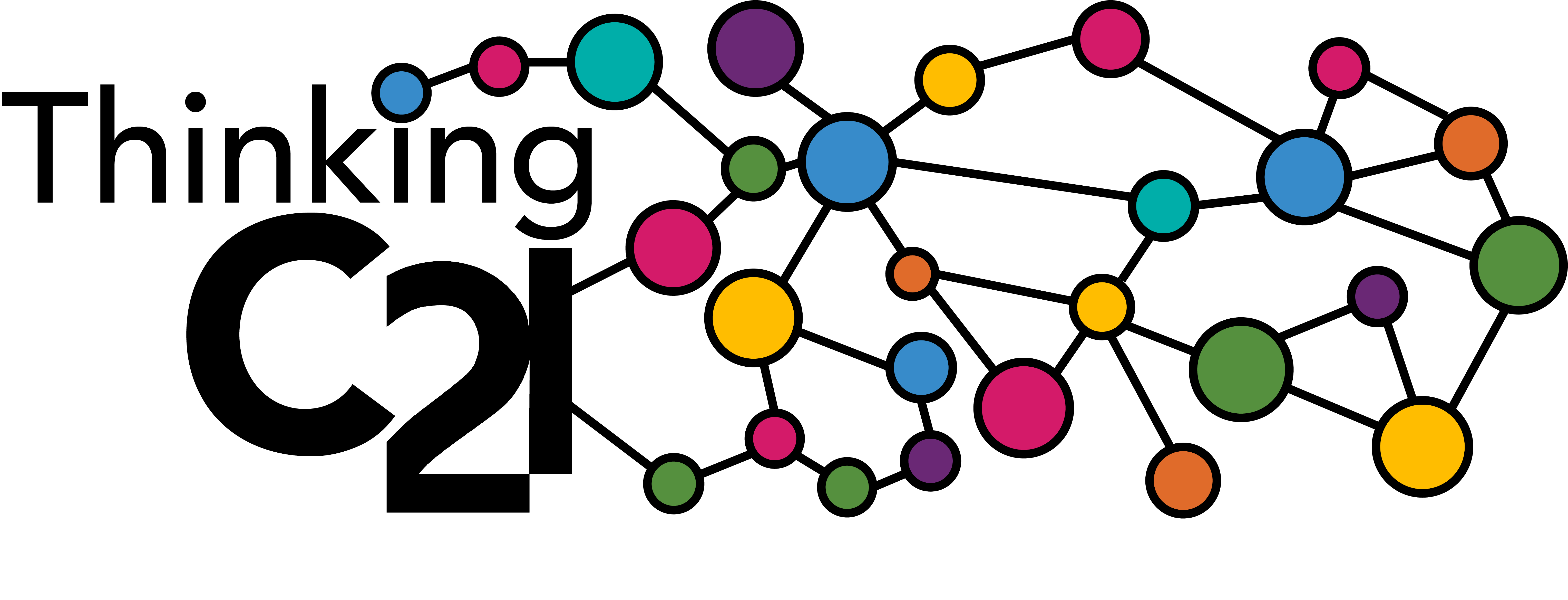by Mauro Carbone
Mauro Carbone is Full Professor of Aesthetics at the Faculté de Philosophie of the University Jean Moulin Lyon 3, and an Honorary Member of the Institut Universitaire de France. His most recent book is titled Philosophy-Screens From Cinema to Digital Revolution, SUNY Press, 2019.
It was March 5th, and Italy had already fallen into the coronavirus emergency when, during an online video forum, I heard the Italian writer Alessandro Baricco suggest considering the pandemic as “the first major crash test of the digital era.”
Beware, though: talking about this emergency in terms of a crash test does not necessarily mean that, given we have crashed and given the very consequences of the crash, “nothing will be the same as before.” Such a sentence was obsessively repeated already after 9/11. Yet, I think that what the cartoonist Francesco Tullio Altan wrote in one of his puzzled-looking women’s speech bubbles stands in the case of the pandemic, too: “Maybe I’m too optimistic, but I believe that after 9/11 we will continue to be the same rabble we were before.”
Still, I would like to posit the hypothesis—and the hope—that at least with respect to our relations to the screens, quite an amount of things will not get back to the way they were. I say “will not get back,” because it is clear to everyone that, in the meantime, a lot has changed. After all, the title of an article published in the “New York Times” on March 31stalso states it: Coronavirus Ended the Screen-Time Debate. Screens Won.
This article, however, specifies that the reported unconditional surrender to the siege of screens would only apply over the emergency period. All the interviewees are in fact convinced that, by the end of this period, our relations with screens will not be irreparably transformed. Moreover, some raise the hope that the lesson will prove useful for us to feel a greater need for physical contact with other human beings. At this point, the reader cannot repress the tacit hope that everyone will beware of such a need, because it would obviously trigger a terrifying resurgence of the contagion.
The doubts about the return to an “as before,” even if seasoned with new wisdom, hence begin to rise. Why, in a world made drastically poorer, should someone continue to buy expensive flight tickets for me to attend conferences in Japan or Brazil, when it is now clear that I can be there from my own home, much to the benefit of the hosting institution’s funds? But also: why, after the end of the emergency period, should I stop having dinner on Skype with that couple from London that I never had many opportunities to hang out with before, now that I discovered it is not only possible, but also easy and pleasant? After all, the aforementioned article in the New York Times reports a meaningful statement by techno-repentant psychologist Sherry Turkle, who nine years ago denounced our technologically alienated condition in Alone Together, and four years ago, in Reclaiming Conversation, pleaded with us to have a chat instead of looking at our cell phones. Well, in the light of the perpetually lit screens in the coronavirus era, Turkle admits that the concern over the time spent facing that light was “a misplaced anxiety,” finding that “now, forced to be alone but wanting to be together, so many are discovering what screen time should be.” Indeed, didn’t the other night’s screen experience allow exactly the conversation Turkle had hoped for, helping me to finally deepen the acquaintance of the London couple?
The crash-test of the coronavirus pandemic therefore made us discover — it is the verb used by Turkle — things that were not crystal clear neither to her nor to us (but let me add: to someone less, to another more). Here are a few points that now spring to my mind:
1. Screens are not — and never have been — simple surfaces showing images. Because they have always operated a certain (historically, culturally, and technologically determined) distribution of the visible and the invisible, they have from time to time established different kinds of relationships and therefore opened different kinds of experiences. In short, screens have never been mere surfaces, but surfaces operating as interfaces, if this is what creating relations means.
2. With the electronic and, later on, digital revolution, screens have gradually become the main visual interfaces of our communication with others and with the world. They have thereby highlighted the power to establish relationships that their showing-and-hiding the visible obviously implies. In the meantime, such a power has been technologically developed in a multimodal sense, by combining in multiple ways texts, images, sounds, and including looks, gestures, and voices.
3. However, we needed the coronavirus pandemic crash-test, about thirty years after use of the Internet began to spread, to massively realize, in our collective experience, certain potentials implied in what I indicated in the previous points. Thus, thanks to the screens, we no longer just share snapshots of our meal before even tasting the food, but we eat it together. This is what makes Turkle say that we are “discovering what screen time should be.” And yet, the possibility of spending it that way was already available. In short, “I didn’t know, I have always known it,” as the double formula of the Freudian unconscious would claim. Still, how did this happen? It seems to me culturally relevant to wonder on the reasons that led to this cultural delay.
4. Obviously, such a delay does not concern our collective experience only. Spurred in their development precisely by the digital revolution, screen studies have been focusing mainly on the status of surface of their study object, by investigating it through archaeological and genealogical researches both suggestive and erudite, but often not equally helpful in the understanding of what characterizes the current or upcoming screen experiences, and how they affect our way of being-in-the-world.
5. Even certain visual culture studies were not able to actually grasp and point out the status of visual interfaces featured on multimodal relationship devices that electronic and then digital screens were progressively highlighting. This way, they too often focused exclusively on visuality and its mutations. On the one hand, such studies isolated this area of investigation from the complementary domain concerning the parallel mutations taking place in our relations with language, both written and spoken. On the other hand, starting from the restricted consideration of screens as mere surfaces showing images, such studies moved in a purely imagocentric perspective, engaging in rather thoughtless leaps forward by predicting what visual device would supplant the screens themselves, and inevitably ending up finding it in VR devices, as Lev Manovich already did in 2001. However, once we have exited the coronavirus emergency and entered a world in which the most widespread need could become to be connected, interactive, and protected, one wonders if a more effective response to this need could not come from certain head-up displays (HUD), which employ what I call “arche-screen” (Carbone 2019a) technologies such as the virtual retinal display. In other terms, such devices use our retina as their “quasi-prosthesis” (Carbone 2019b) in order to make us access the participatory and multimodal horizons of “mixed reality.”
6. For the reasons set out above, I believe it is both important and urgent to develop a transdisciplinary research focusing on the study not of screens, but of our present and forthcoming multimodal screen experiences, in the conviction of their persistent centrality and their decisive influence on the wider range of our social interactions.
7. So far, the scholars who reflected on the proliferation of screens and on the evolution of our experiences with and through screens came mainly from the fields of film, media, literature, or aesthetics, and were inevitably influenced by their training in these areas. It seems to me that it is increasingly urgent to try to focus on what I would call a pragmatics of screen experiences, in the sense in which Paul Watzlawick and his collaborators of the Palo Alto School spoke of a Pragmatics of Human Communication, by explaining that “the data of pragmatics are not only words, their configurations and meanings, […] but their nonverbal concomitants and body language as well” (P. Watzlawick, J.H. Beavin, D.D. Jackson, Bas du formulaire 2011: 4).
In this sense, last fall I submitted to the French Agence Nationale de Recherche a “pre-project” (sic) which, in my pathetic attempt to make more appealing, I designated with the acronym SES (“Screen Experiences Studies,” in fact). Unfortunately, that pre-project was not accepted, among other reasons, because, as the evaluator explained, “its innovative feature is […] difficult to seize, since the dossier states that SES do not exist yet, but at the same time opposes them to already existing doctrines.”
Who knows; after the coronavirus pandemic, maybe my pre-project would not have posed such insurmountable logical problems to that evaluator. It is also in this sense that I guess and hope that, considering our relationships with screens, “nothing will be the same as before.” Maurizio Ferraris is right when he announces the advent of what he mockingly named “Post Coronial Studies.” After all, in order to get a glimpse of the novelty of the perspective toward which we are moving, it suffices to read another article on screens that the same author of the aforementioned piece had published in the New York Times just a year earlier. She then recalled that once “screens used to be for the elite,” while avoiding them had later become a status symbol,” because, as she explained a year ago, “human contact is now a luxury good.”
On the contrary, at least until a vaccine will be available and an effective treatment against the coronavirus perfected, we will preferably use screens in order to have “human communications,” and at the same time to protect ourselves from the aforementioned “human contact.” After all, the word “screen” is etymologically linked to the function of protecting. And too bad for those who do not have a personal access to a screen, or cannot rely on a good Internet connection.
References
1. M. Carbone, 2019a, Philosophy-screens: from Cinema to the Digital Revolution, trans. Marta Nijhuis, Albany NY, SUNY Press.
2. M. Carbone, 2019b, From Screens as Prostheses of Our Body to Our Body as a Quasi-Prosthesis of the Screens? trans. Marta Nijhuis, in D. Cavallotti, S. Dotto, A. Mariani (eds.), Exposing the Moving Image: The Cinematic Medium Across World Fairs, Art Museums, and Cultural Exibitions, Milan, Mimesis: 159-166.
3. L. Manovich, 2001, The Language of New Media, Cambridge MA, The MIT Press.
4. P. Watzlawick, J.H. Beavin, D.D. Jackson, 2011, Bas du formulaire Pragmatics of Human Communication: A Study of Interactional Patterns, Pathologies, and Paradoxes, New York – London, W.W. Norton & Co. Inc., 1968.






